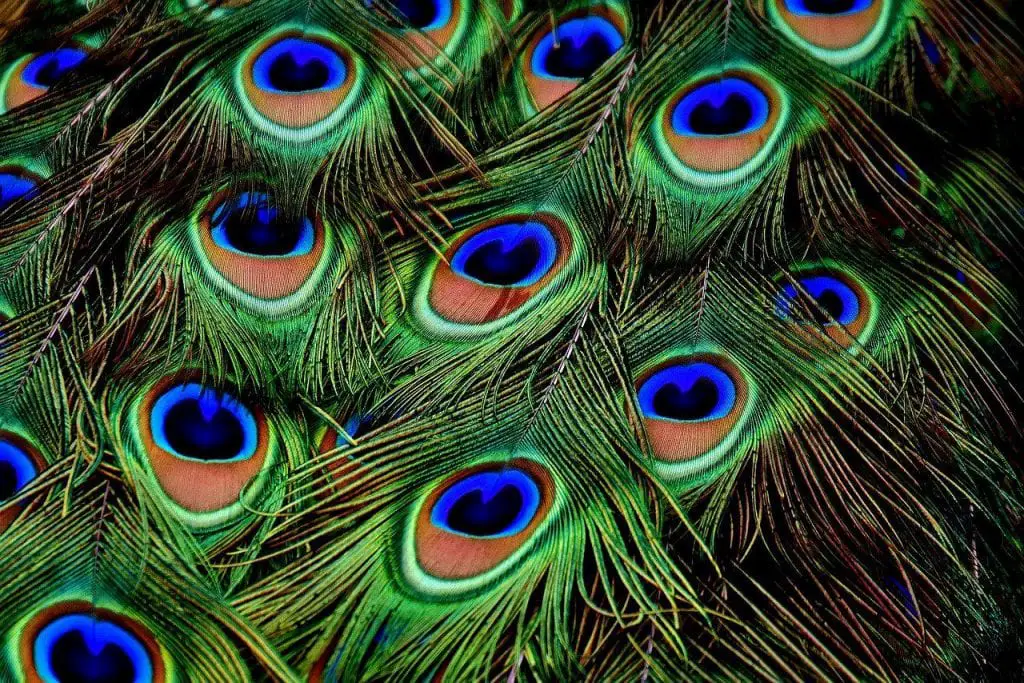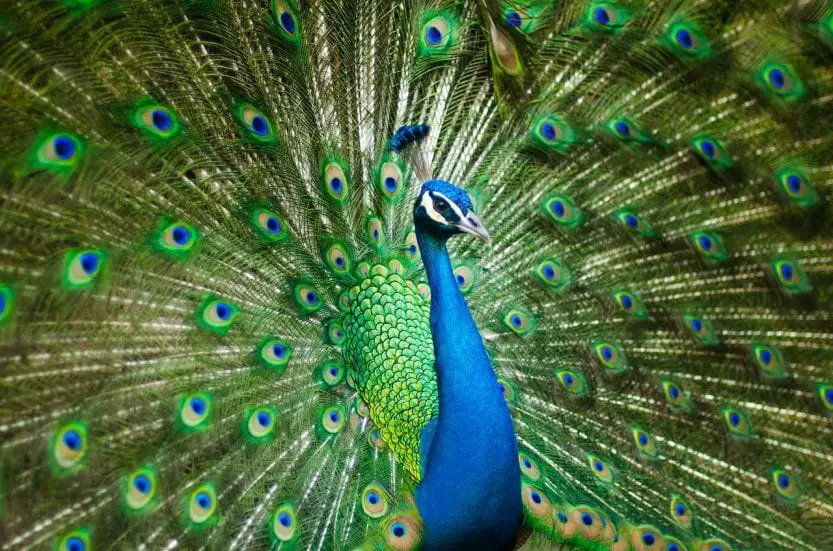One of the most beautiful birds in the world, the peacock, refers to the male bird of the species of peafowl birds. The females are called peahens and are not as fascinating to look at as their male blue counterparts. Peahens are normally hues of brown and look quite dull in appearance. Collectively, the birds are called peafowl. These breathtaking birds are among some of the most wonderful things that are blue on earth. Characteristically a rich cobalt to turquoise blue, peacocks have “blue eye” designs in their tails. This blue shade matches their blue feathers and lends enigmatic blue accents to a peacock’s appearance as it spreads its tail. Here are some interesting facts about the most mesmerizing blue things on the planet.
Types
Three different kinds of this bird species exist in the world. One originates on the continent of Africa, and the other two have their origins in Asia. The peacock that comes from Africa is known as the Congo Peafowl. This particular breed of these amazing things that are blue descended from the Congo basin in Africa. The most popularly known bright blue peafowl breed comes from India in Asia. There is also a green peafowl variety that has its origin in the Indian subcontinent.

Where They Live
Peacocks have been hunted and prone to the poacher’s knife due to their wonderful blue and emerald green feathers. In their natural habitats, forests and rainforests, they have a life span of twenty years. Though they are most comfortable in this habitat, they are not safe, so are kept in captivity. This is to preserve the species and this is done by conservationists and wildlife organizations. Raised domestically, they live for nearly fifty years.
Gender Differences
The primary difference between male and female birds is size. While this may vary from case to case, peacocks are two times the size of peahens. You tend to notice these vibrant blue creatures because of the tail that stands out in male birds. Of all the beautiful things that are blue in this world, the peacock strikes you at once. The tail is, in fact, not a “tail” at all. It’s a train.
Similarities
If you look closely at any peafowl, you’ll discover a feature that they all have in common, whether African or Asian. There are distinct bare patches of skin around the area of birds’ eyes. These patches, where no blue feathers exist, can be seen in both the peacock and peahen.
Traits
Peacocks have certain skills that they use to keep away from predators. Since they are vivid blue things that are easily noticeable, they need to have some techniques of camouflaging themselves from predators. The average speed at which a peacock can run is roughly 16 kilometers per hour. This isn’t fast enough to keep the bird safe from all predators.
Since it doesn’t tend to fly with great prowess either, you’ll notice that peacocks run into trees. This is largely their typical behavior in the wild, in order for these wonderful blue things to hide. When a chick is as young as three days old, it can fly to a certain degree. Peacocks can fly and this may come as a surprise for such a large bird. Still, they prefer the ground and only fly low over short distances. This is done in response to enemies and when they retreat into their roosts at night.
Development
From a very young age, baby birds, called chicks, tend to want to live in small groups. They are very sociable birds with others within their species. The word for a group of peacocks is a “harem”. A group of peahens, excluding peacocks, is known as a bevy. Peacocks may have multiple partners for mating, sometimes up to five. The minimum number is two.
Spring is the time when these gorgeous things that are blue breed. At this time, peacocks resplendently display their trains, positioning them upright like a fan. This is done in order to impress and attract peahens to mate with. In the mating season, peacocks become highly territorial and secure their areas to keep other males at bay. They are most aggressive at this period. They also make loud sounds to prevent others from interference. This is done by shaking their tails in a particular direction. Humans can’t hear it, but other birds can.
Peahens may lay six to eight eggs at once. This is known as a “clutch”. Sometimes this figure could increase. They tend to lay their eggs in the afternoon. They lay unfertilized eggs as “decoys” to fool predators. This makes the peahen cleverer than the peacock.
Description
Peafowl have crests on their heads, but designs and color may differ across different species and genders. Around the globe, in many religions, they are considered auspicious to keep as pets. They are also reared as pets for entertainment. This has been the case for close to 2,000 years, when ancient civilizations practiced these customs. In certain areas of India, peacocks are revered and kept for reasons of religious austerity. They are almost worshiped, especially for the beautiful blue things that they are. The peacock is the national bird of India.
In the Hindu religion, the peacock is symbolic of knowledge, compassion, truth and kindness. These are all qualities associated with things that are blue. The color blue is revered in Hinduism, so it’s no wonder that the peacock is too.
Feathers
Peacocks have large wingspans measuring around 4.9 feet. It’s feathers are large by any other bird’s standards.
At birth, peacocks don’t look impressive at all. They are born without their famous trains. These grow and develop till the age of three. This is the age of maturity in a peacock. Peacocks replenish their feathers once a year, and have a new set to display. The feathers, upon closer examination, reveal tiny crystals embedded in them. The microscopic structures reflect several light wavelengths. These give the feathers a distinct sheen. The train looks like a fluorescent cloak of sea blue. One of the most extravagant things that are blue is the train of the peacock. This is almost sixty percent of the total length of the bird.
Colors
Peacocks come in different colors, other than the most desired blue hue. White peacocks are rare, but they do exist. These are born as a result of a genetic mutation called albinism. They are born as yellow when they are chicks. They turn gradually white. There is also a gray variety found in Myanmar (previously Burma). The blue peacock is the most resilient and can be tough and hardy in cold climates, though it thrives in humid weather. The green variety doesn’t survive the cold.




